
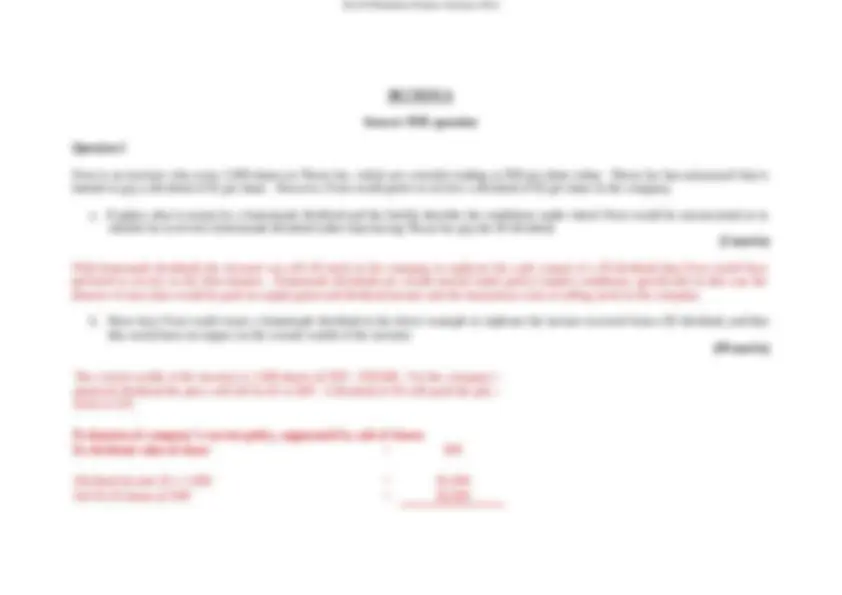
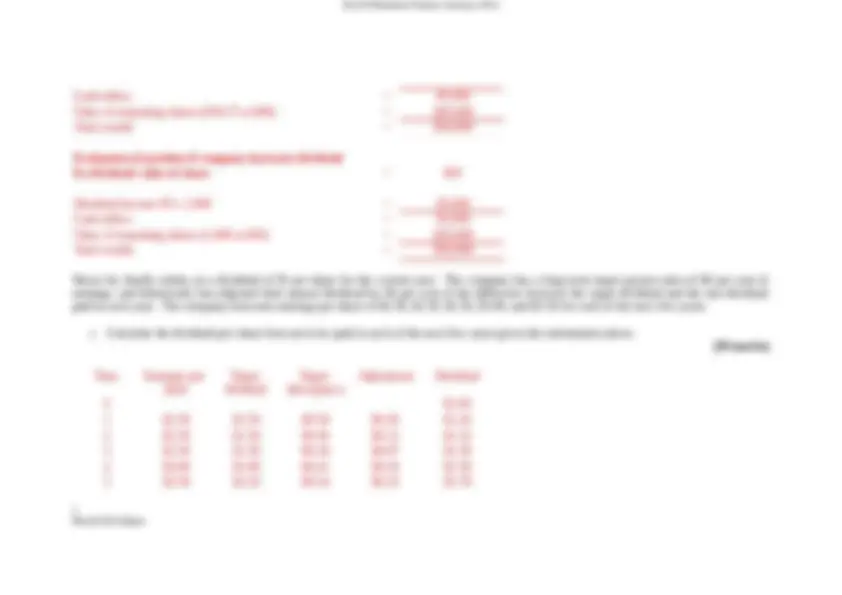
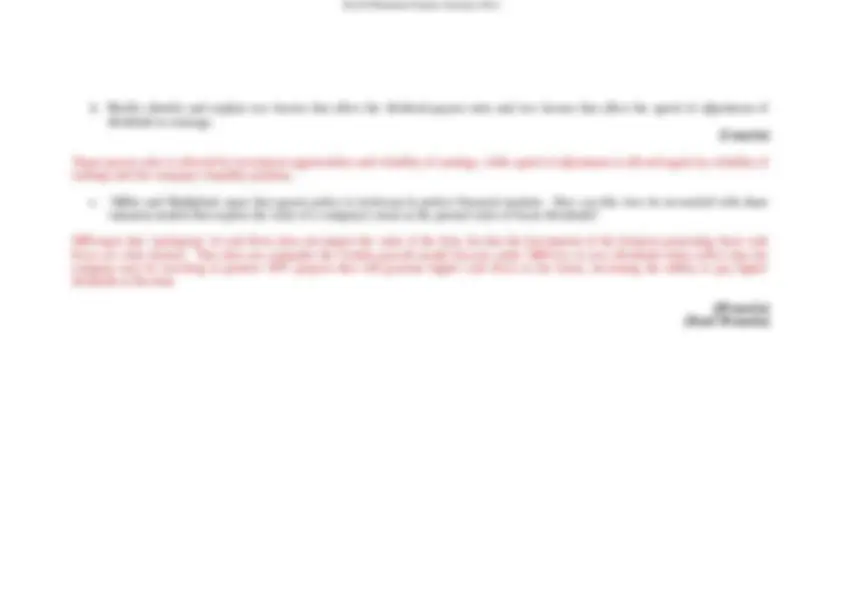
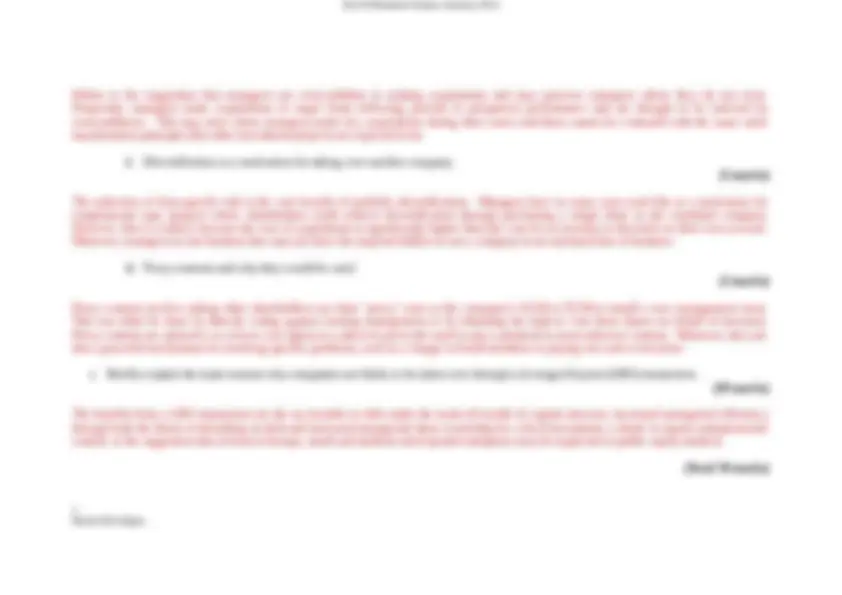
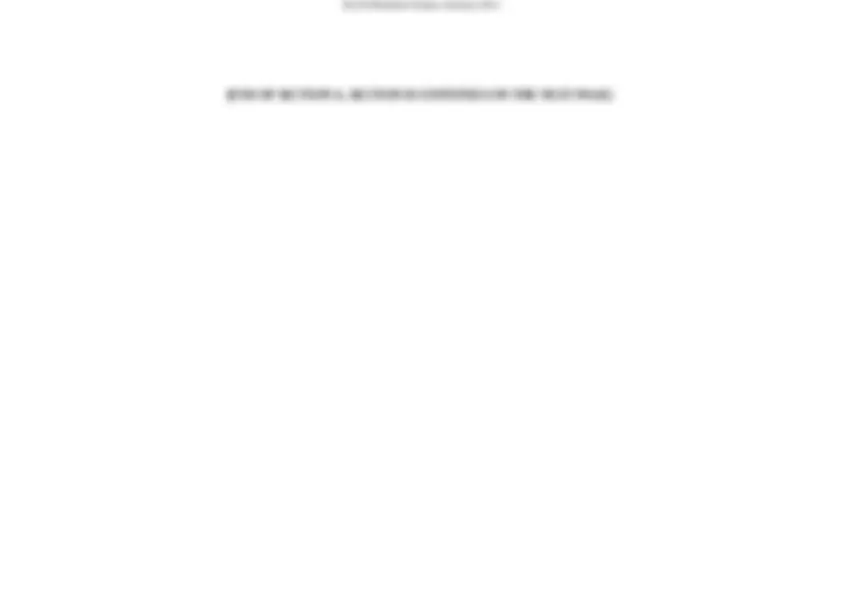
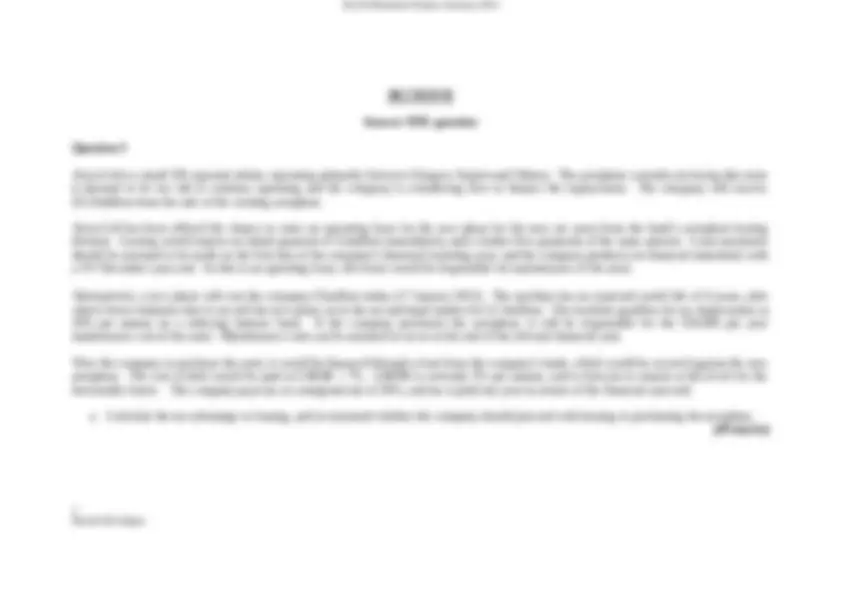
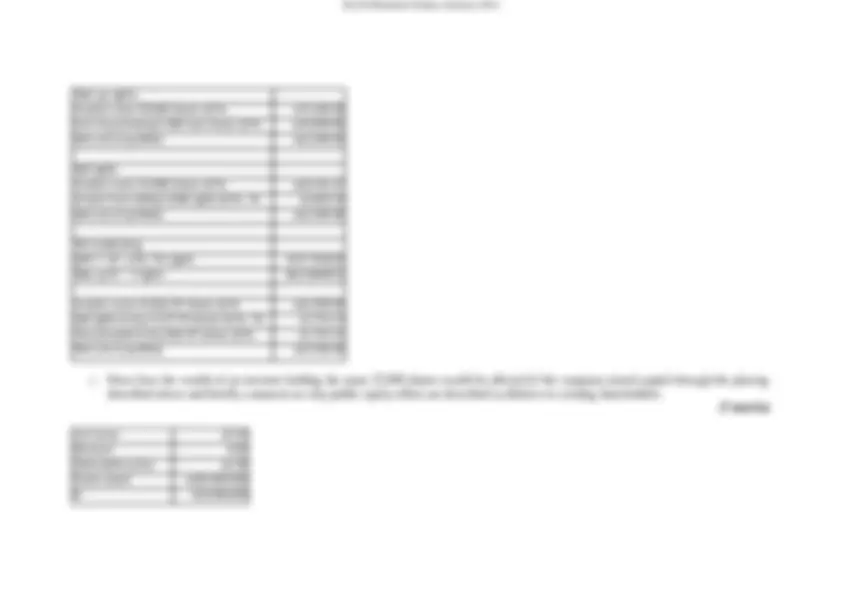
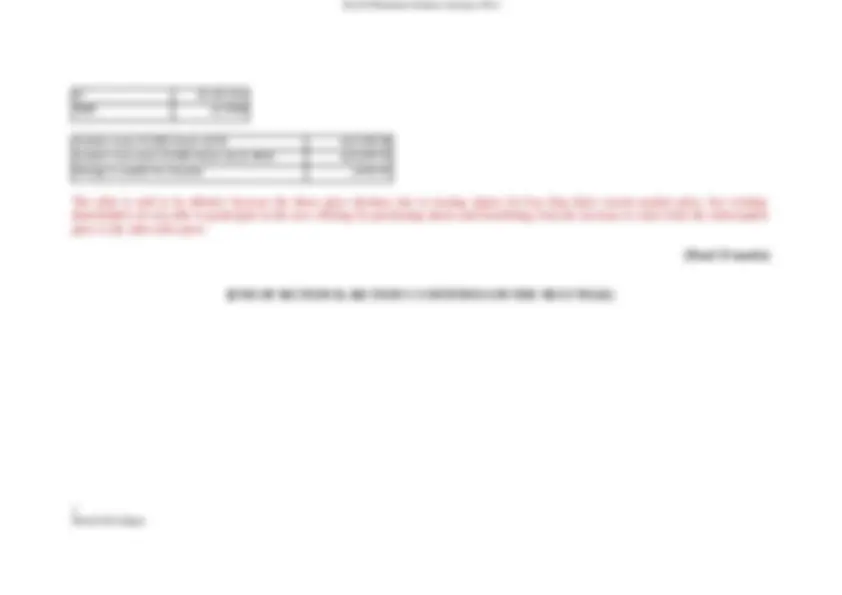
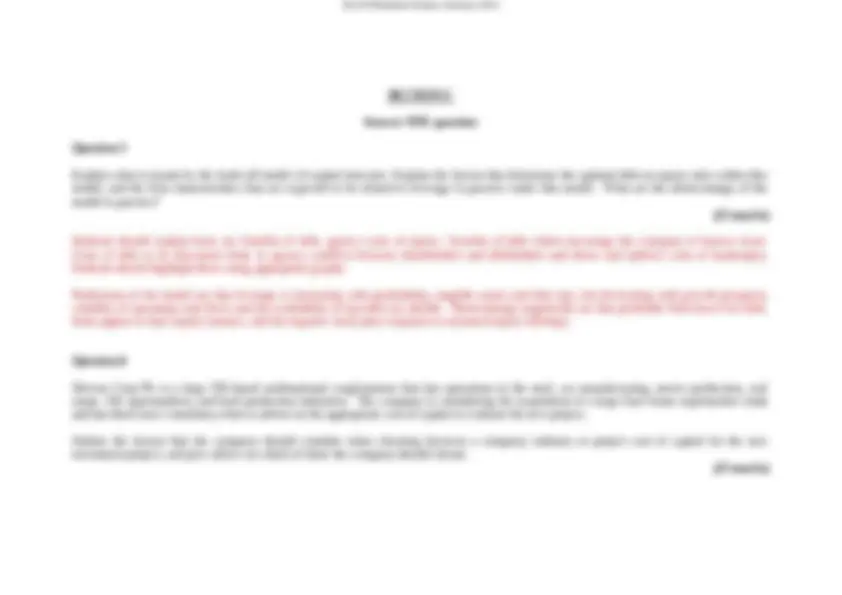
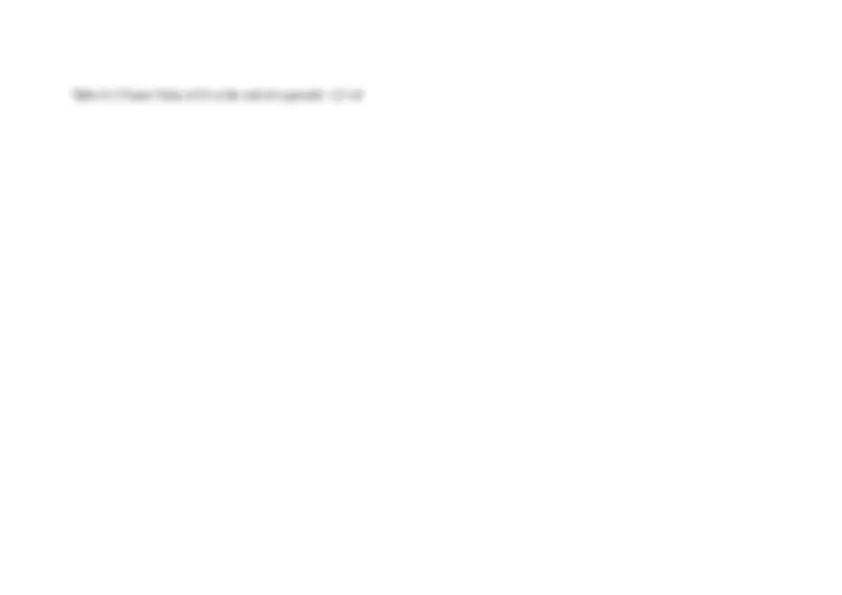
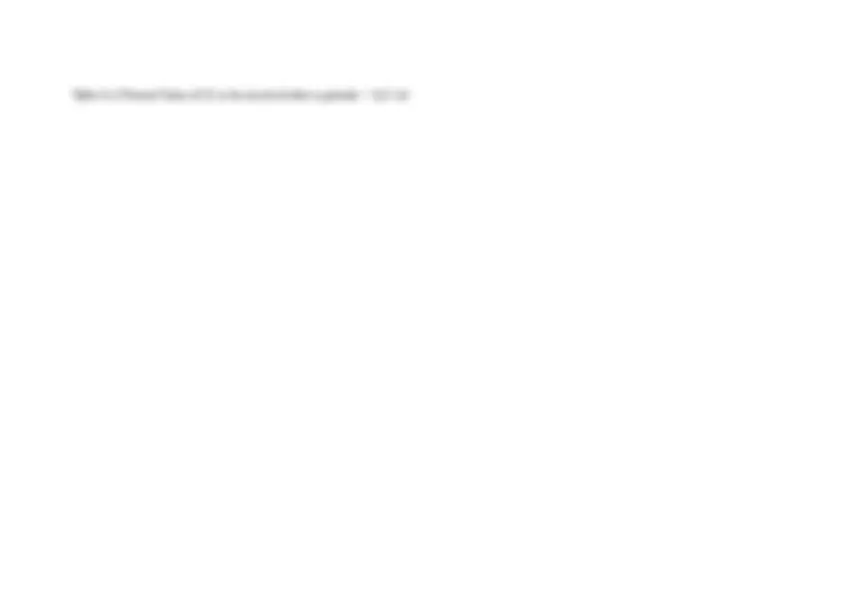
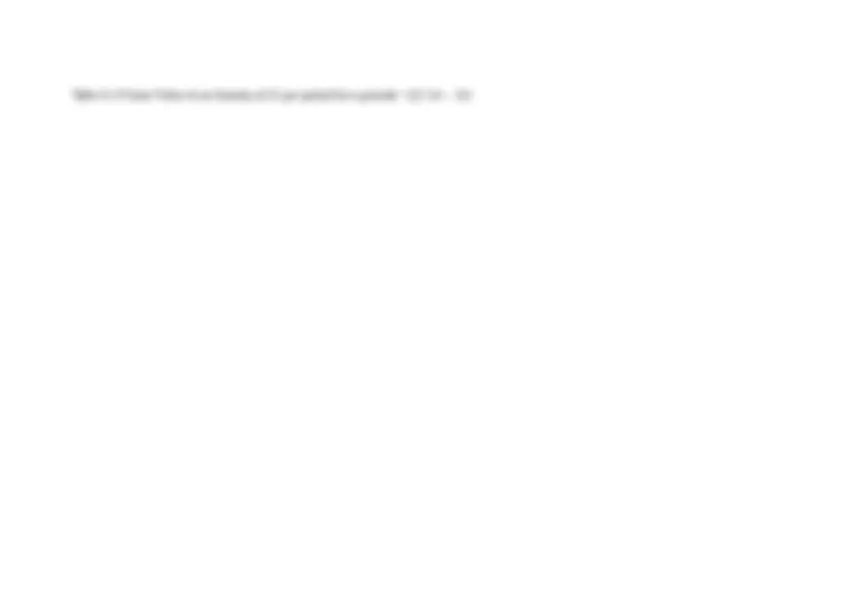
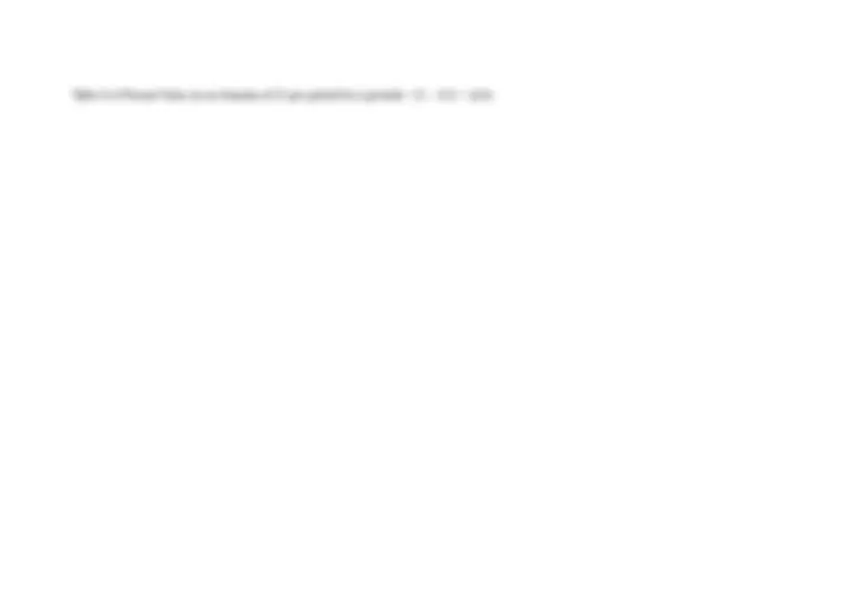


Study with the several resources on Docsity

Earn points by helping other students or get them with a premium plan


Prepare for your exams
Study with the several resources on Docsity

Earn points to download
Earn points by helping other students or get them with a premium plan
Community
Ask the community for help and clear up your study doubts
Discover the best universities in your country according to Docsity users
Free resources
Download our free guides on studying techniques, anxiety management strategies, and thesis advice from Docsity tutors
AG210_January_2012Sols.docxAG210_January_2012Sols.docxAG210_January_2012Sols.docx
Typology: Exercises
1 / 21

This page cannot be seen from the preview
Don't miss anything!














Calculators must not be used to store text and/or formulae nor be capable of communication. Invigilators may require calculators to be reset
2 Patrick McColgan
Cash inflow = $5, Value of remaining shares (918.37 at $49) = $45, Total wealth = $50,
Evaluation of position if company increases dividend Ex dividend value of share = $
Dividend income $5 x 1,000 = $5, Cash inflow = $5, Value of remaining shares (1,000 at $45) = $45, Total wealth = $50,
Nixon Inc finally settles on a dividend of $1 per share for the current year. The company has a long-term target payout ratio of 60 per cent of earnings, and historically has adjusted their annual dividend by 40 per cent of the difference between the target dividend and the last dividend paid in each year. The company forecasts earnings per share of $2.50, $2.50, $2.50, $3.00, and $3.50 for each of the next five years.
c. Calculate the dividend per share forecast to be paid in each of the next five years given the information above. (10 marks)
Time Earnings per share
Target dividend
Target discrepancy
Adjustment Dividend
2 Patrick McColgan
d. Briefly identify and explain two factors that affect the dividend payout ratio and two factors that affect the speed of adjustment of dividends to earnings. (5 marks)
Target payout ratio is affected by investment opportunities and volatility of earnings, while speed of adjustment is affected again by volatility of earnings and the company’s liquidity position.
e. Miller and Modigliani argue that payout policy is irrelevant in perfect financial markets. How can this view be reconciled with share valuation models that express the value of a company’s stock as the present value of future dividends?
MM argue that ‘packaging’ of cash flows does not impact the value of the firm, but that the investments of the business generating these cash flows are what matters. This does not contradict the Gordon growth model because under MM low or zero dividends today reflect that the company may be investing in positive NPV projects that will generate higher cash flows in the future, increasing the ability to pay higher dividends at this time.
(20 marks) (Total 50 marks)
(10 marks)
c. Given the cash flows outlined in part b) Jones Plc has estimated that it is able to extract £50million of gains from combining the two enterprises. The merger terms offered are 3 shares of Jones Plc for every 4 shares of O’Leary Plc. Estimate the net cost and net gain from the acquisition and determine the likely impact of the acquisition on the stock price of Jones Plc.
Expected value of company following the take over (ignore the run-up in O’Leary’s stock price as a result of the merger announcement): V(J) + V(O) + PV(JO) = £600m + £300m + £50m = £950m
Number of shares to be issued for the takeover = 3 for 4 = 150million * ¾ = 112.5million
Proportion of shares to be held by Watty’s shareholders = 112.5m/(200m + 112.5m) = 36 per cent
Net cost = gross cost – value of target = (0.36 x £950m) - £300m = £342m - £300m = £42million
Net gain = gain – net cost = £50m - £42m = £8million
Share price of Jones Plc = £950million / 312.5million shares = £3. A marginal increase in the company’s stock price. (10 marks)
d. Explain what is meant by the following terms in relation to corporate takeovers:
i. Managerial hubris. (5 marks)
Hubris is the suggestion that managers are overconfident in making acquisitions and may perceive synergies where they do not exist. Frequently, managers make acquisitions of target firms following periods of prosperous performance and are thought to be infected by overconfidence. This may arise where managers make few acquisitions during their career and these cannot be evaluated with the same value maximisation principles that other investment projects are expected to be.
ii. Diversification as a motivation for taking over another company. (5 marks)
The reduction of firm-specific risk is the core benefit of portfolio diversification. Managers have in some cases used this as a motivation for conglomerate type mergers where shareholders could achieve diversification through purchasing a single share in the combined company. However, this is a fallacy because the cost of acquisitions is significantly higher than the cost for an investor to diversify on their own account. Moreover, managers in one business line may not have the required skillset to run a company in an unrelated line of business.
iii. Proxy contests and why they would be used. (5 marks)
Proxy contests involve asking other shareholders use their ‘proxy’ votes at the company’s AGM or EGM to install a new management team. This can either be done by directly voting against existing management or by obtaining the right to vote these shares on behalf of investors. Proxy contests are attractive as a lower cost option to a takeover given the need to pay a premium in most takeover contests. Moreover, they are also a powerful mechanism for resolving specific problems; such as a change in board members or paying out cash to investors.
e. Briefly explain the main reasons why companies are likely to be taken over through a leveraged buyout (LBO) transaction. (10 marks)
The benefits from a LBO transaction are the tax benefits to debt under the trade-off model of capital structure; increased managerial efficiency through both the threat of defaulting on debt and increased managerial share ownership for a fixed investment; a desire to regain entrepreneurial control; or the suggestion that at least in Europe, small and medium sized quoted enterprises may be neglected in public equity markets.
(Total 50 marks)
2 Patrick McColgan
Answer ONE question
Question 3
Avios Ltd is a small UK regional airline, operating primarily between Glasgow Airport and Orkney. The aeroplane currently servicing this route is deemed to be too old to continue operating and the company is considering how to finance the replacement. The company will receive £0.25million from the sale of the existing aeroplane.
Avios Ltd has been offered the chance to enter an operating lease for the new plane for the next six years from the bank’s aeroplane leasing division. Leasing would require an initial payment of £1million immediately, and a further five payments of the same amount. Lease payments should be assumed to be made on the first day of the company’s financial reporting year, and the company produces its financial statements with a 31st^ December year-end. As this is an operating lease, the lessor would be responsible for maintenance of the asset.
Alternatively, a new plane will cost the company £5million today (1 st^ January 2012). The machine has an expected useful life of 6 years, after which Avios estimates that it can sell the new plane on in the second hand market for £1.5million. The machine qualifies for tax depreciation at 20% per annum on a reducing balance basis. If the company purchases the aeroplane, it will be responsible for the £50,000 per year maintenance cost of the asset. Maintenance costs can be assumed to occur at the end of the relevant financial year.
Were the company to purchase the asset, it would be financed through a loan from the company’s bank, which would be secured against the new aeroplane. The cost of debt would be paid at LIBOR + 7%. LIBOR is currently 3% per annum, and is forecast to remain at this level for the foreseeable future. The company pays tax at a marginal rate of 30%, and tax is paid one year in arrears of the financial year-end.
a. Calculate the net advantage to leasing, and recommend whether the company should proceed with leasing or purchasing the aeroplane. (20 marks)
2 Patrick McColgan
b. Avios’ CEO has suggested that the lease sounds like a good business deal for the company because the route generates annual net operating cash flows of £1.25million for the company, which more than covers the cost of the lease payments. Critically evaluate the CEO’s argument. (5 marks)
Core point is that the CEO is confusing an operating decision with a financing decision. The calculation in part a is a financing project – whether it is better to fund the purchase of the asset through secured borrowing or through a lease. This says nothing about the NPV of the operating / investment decision, which should be evaluated separately. Although the operating cash flows from the project would be sufficient to cover the lease payments, financing the asset through borrowing to purchase could in theory have been a better decision – although the calculations in part (a) highlight that leasing is the better deal.
(Total 25 marks)
Take-up rights:
Investor owns 30,000 shares @ Px £72,500.
Cost of purchasing 5,000 new shares @ Ps -£10,000.
Net cost of por�olio £62,500.
Sell rights:
Investor owns 25,000 shares @ Px £60,416.
Income from selling 5,000 rights @ Px - Ps £2,083.
Net cost of por�olio £62,500.
Tail-swallowing
Sell Y = (N* x Ps) / Px rights 4137.
Take up N* - Y rights 862.
Investor owns 25,862.07 shares @ Px £62,500.
Sell rights to buy 4,137.93 shares @ Px - Ps £1,724.
Use proceeds to buy 862.07 shares @ Ps -£1,724.
Net cost of por�olio £62,500.
c. Show how the wealth of an investor holding the same 25,000 shares would be affected if the company raised capital through the placing described above and briefly comment on why public equity offers are described as dilutive to existing shareholders. (7 marks)
Cum price £2.
Discount 0.
Subscrip�on price £2.
Funds raised £100,000,
N 250,000,
N* 42,105, TERP £2.
Investor owns 25,000 shares @ P0 £62,500. Investor now owns 25,000 shares @ £2.4820 £62,049. Change in wealth for investor -£450.
The offer is said to be dilutive because the share price declines due to issuing shares for less than their current market price, but existing shareholders are not able to participate in the new offering by purchasing shares and benefitting from the increase in value from the subscription price to the after-offer price.
(Total 25 marks)
2 Patrick McColgan
Students should explain that the company cost of capital is likely to be inappropriate for this investment project. A company cost of capital takes into account the beta of existing assets weighted in proportion to their market value within the business. As such, the beta of steel, real estate, movie production, etc is unlikely to reflect the market risk of the new investment in East Asian supermarkets. This may lead to incorrectly accepting a negative NPV project, but more likely if the market risk of the supermarket industry is below 1, incorrectly rejecting a positive NPV project.
The industry cost of capital is typically more appropriate for investment projects in a new area. The company already has investment in the supermarket industry and could look to their cost of capital, and that of competitor firms in the industry. They could also look to the cost of capital for traded East Asian supermarkets to determine the market risk of this new investment.
A project specific cost of capital is theoretically most appropriate, but can be subject to noise in measurement. Moreover, even if the company were able to determine a project cost of capital from its existing investment in supermarkets, it is not clear that the market risk of operating in East Asia would be identical to the market risk of operating in the UK.
Lastly, the company would need to consider any leverage taken on to fund the new investment. Borrowing will increase the equity beta of the project (increased financial risk), but where interest payments on debt are tax deductible it tends to reduce the weighted average cost of capital.
2 Patrick McColgan
Table A-2 Present Value of £1 to be received after n periods = 1/(1+r)n
Table A-3 Future Value of an Annuity of £1 per period for n periods = [(1+r) n^ – 1]/r